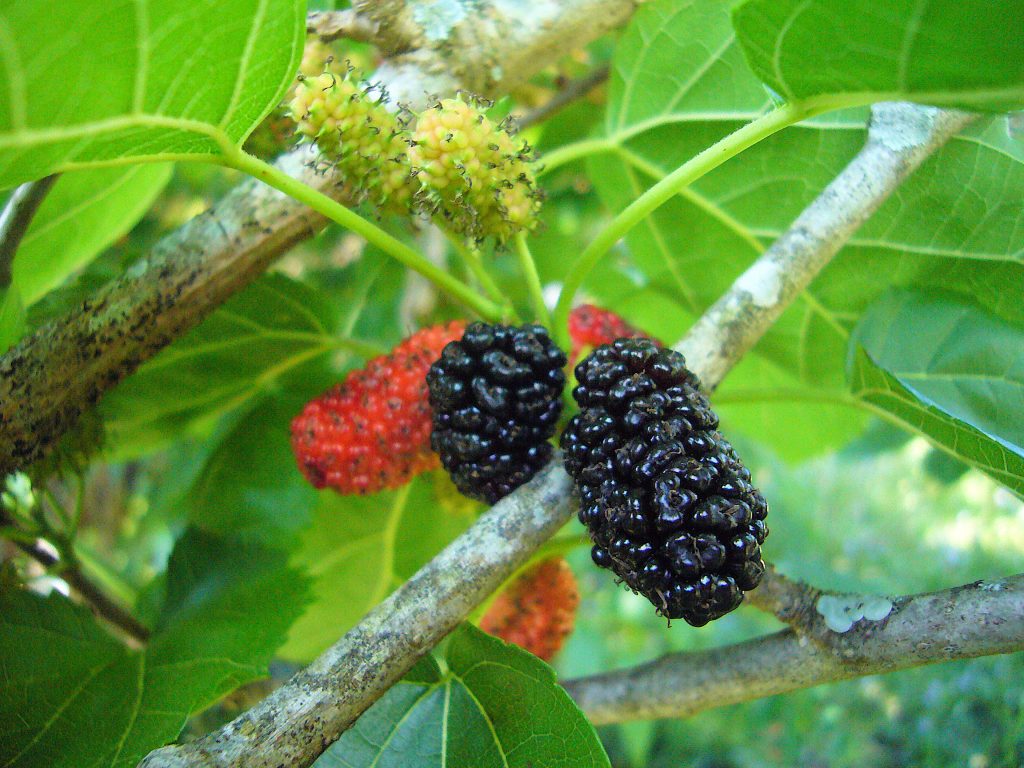
Ripe mulberries are similar to blackberries in taste. Photo by Green Deane
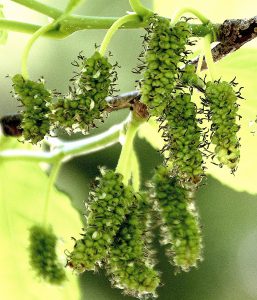
Green Mulberries are slightly mind-altering and tummy upsetting. Photo by Green Deane
A few newsletters ago it was mentioned the Mulberries were in blossom. This week I ate my first Mulberries of the season. Looking like over-grown blackberries but completely sweet you eat all of them except the short stem… or you can eat that, too. In fact, I just nibble them off the tree. Like many fruit trees they are highly seasonal, producing for perhaps a month though with a bit of travel you can extend the season. You have to work with its schedule not yours. The Mulberry is also considered a trash tree locally because it drops a lot of purple-black berries on oh-so-clean sidewalks and manicured lawns. In fact, they’ve even bred a fruitless kind… have your mulberry but don’t eat it, too… Don’t forget the young leaves are edible cooked. To read more about the Mulberry go here. To see my video on Mulberries, click here.

Foraging classes are held rain or shine, heat or cold. Photo by Nermina Krenata
My foraging classes this weekend range from just east of Orlando to Ft. Pierce. Things you need to know is it will be a little chilly Saturday in Orlando and in Ft. Pierce the preserve has no “offical” bathrooms. Plan accordingly.
Saturday, March 7th, Blanchard Park, 10501 Jay Blanchard Trail, Orlando, FL 32817. 9 a.m. to noon. Meet at the pavilion near the YMCA building and tennis courts.
Sunday, March 8th, George LeStrange Preserve, 4911 Ralls Road, Fort Pierce, FL, 34981. 9 a.m. to noon. (There are no official bathrooms at this location and take the time change into consideration.)
Saturday, March 14th, Florida State College, south campus, 11901 Beach Blvd., Jacksonville, 32246. We meet at Building “A” next to the administration parking lot. 9 a.m. to noon.
Sunday, March 15th, Ft. Desoto Park, 3500 Pinellas Bayway S. St. Petersburg Fl 33715. There is an entrance fee to the park as well. Meet at the bay fishing pier parking lot. It’s a large parking lot, meet near the bathrooms. We will walk a good bit. 9 a.m. to noon.
Saturday, March 21th, Ft. Meade Outdoor Recreation Area, 1639 Frostproof Highway, Fort Meade, FL 33841. (Frostproof Highway is also Route 98.) 9 a.m to noon. Meet at the second set of bathrooms (in the middle of the park) which is due south from the highway. (Don’t confuse this location with Mead Gardens which is in Winter Park near Orlando.)
Sunday, March 22nd, Wickham Park, 2500 Parkway Drive, Melbourne, FL 32935-2335. Meet at the “dog park” inside the park. 9 a.m. to noon.
Saturday, March 28th, Haulover Canal, Merritt Island National Refuge, north of the Kennedy Space Center. . Read the instructions below. We meet the the northwest end of the canal area.
Sunday, March 29th, Spruce Creek Park, 6250 Ridgewood Ave. Port Orange FL, meet at the pavilion. 9 a.m. to noon.
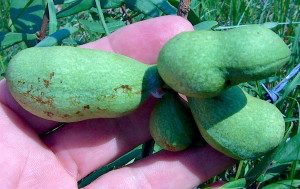
Pawpaws are an exciting find. Photo by Green Deane
Paw paws are common but elusive in this part of the world. Neither rare nor prolific yet they manage to hide well, even in plain sight! Kind of like persimmons, they are wall-flowers, not showy. More so the fruit starts out green and blends in well. And about the time it ripens to light green and yellow the woodland creatures are harvesting them. Here and gone. So finding the shrub this time of year by the blossoms is the easiest way to locate them. Dry open ground is a good place to look, which is why pastures near the roadway are often fruitful. It is also common to find them at the base of slash pines in scrub areas. We have several different species locally from dwarf versions with red blossoms to spindly tall shrubs with creamy-yellow blossoms. You can read more about them here.

The semi-annual insanity is upon us.
By this time next week a lot of you will be feeling poorly and we know why: Daylight Saving Time. I so dislike the time change that in 2006 I simply stopped doing it. I refuse to change times seasonally. I no longer leap forward in the spring or fall back in the fall. I do not change my clocks or schedule at all. I eat at the same time, feed my cats and local squirrels at the same time, go to bed and get up at the same time. In short I do not change with the rest of the time-flipping world. Personally, I really don’t care if we use standard/solar time or daylight savings time permanently. It’s the flipping I can’t stand. I got two copies of the time gene and they rebel. After all, there are only so many hours of daylight and changing a clock does not create any more or less. So I stay on standard/solar time, and I remind myself that the rest of the world is delusional thinking it’s an hour ahead of me.
 I haven’t watched TV since 1977 so that doesn’t influence me. When I worked for a company I simply went to work an hour earlier for half a year. I did not eat lunch on their schedule but rather mine. If I have an appointments I just make note it’s actually an hour earlier: Noon their time, 11 mine. In my personal life, habits, and space, I don’t change. Starting Sunday my computer, slave to its programming, will tell me it is almost 1900, or 7 p.m. The sun will tell me nonsense, it’s six p.m. and time to feed Cous-Cous and Oliver Whitecat. More so, the atomic clocks that regulate time down to the millionth of a second don’t leap forward or fall back. They stay on solar time. The animals stay on solar time. Mother nature stays on solar time. Only humans play the silly game. Only the government would cut the bottom foot off a blanket, sew it on the top, and then argue the day is longer. In fact Asia and Africa do not change time, nor most of Arizona and Hawaii. Sensible folks, them Arizonans and Hawaiians. Studies also show DST does not save energy and cost more than not changing. You can read more about the history of this nonsense here.
I haven’t watched TV since 1977 so that doesn’t influence me. When I worked for a company I simply went to work an hour earlier for half a year. I did not eat lunch on their schedule but rather mine. If I have an appointments I just make note it’s actually an hour earlier: Noon their time, 11 mine. In my personal life, habits, and space, I don’t change. Starting Sunday my computer, slave to its programming, will tell me it is almost 1900, or 7 p.m. The sun will tell me nonsense, it’s six p.m. and time to feed Cous-Cous and Oliver Whitecat. More so, the atomic clocks that regulate time down to the millionth of a second don’t leap forward or fall back. They stay on solar time. The animals stay on solar time. Mother nature stays on solar time. Only humans play the silly game. Only the government would cut the bottom foot off a blanket, sew it on the top, and then argue the day is longer. In fact Asia and Africa do not change time, nor most of Arizona and Hawaii. Sensible folks, them Arizonans and Hawaiians. Studies also show DST does not save energy and cost more than not changing. You can read more about the history of this nonsense here.

My 24-hour wrist watch.
I also use my watch for a compass. It works best on solar time. If I change it to Daylight Savings Time, south becomes 11 instead of 12….truly bizarre, and I’d be way off my mark. I am not a perfectionist but the sun at 11 just doesn’t work for me. 12 is just right. So I stay on solar time…. in tune with the cosmos and my location on the rotation. And when interacting with the world gone flipping mad, I just tell myself they are wrong. It all works out rather well….. almost. The only problem is my cat constituency. They know when the rest of the world leaps forward, prompting them to demand to be fed an hour earlier. I don’t know how they know but they do…. especially in the morning.
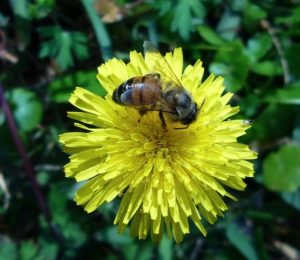
A Dandelion is a gas station for a bee. Photo by Green Deane
There is perhaps no more commonly known wild weed than the Dandelion. Whether a child blowing aways the Dandelion puff or a seasoned pallet flavoring coffee with the roasted root, Dandelions are user friendly. My first batch of wine — after two five-gallon batches of beer — was Dandelion wine, made when I was in the 8th grade. It was very reasonable choice: I could not buy wine, I did not have a driver license, and Dandelions were everywhere. That was more than a half-a-century ago in Maine where summer Dandelions grew large and luscious. Now I live in Florida and Dandelions here are usually anemic winter stragglers. That first experience with a wild wine makes it easy to realize how wine-making evolved. There was no great preparation. I put blossoms, water, sugar and yeast into a 5-gallon crock, the top covered with a towel. When it was done working it went into old glass soda bottles. Perhaps it was beginners luck but it worked wonderfully. It doesn’t always, that’s for sure as subsequent failures over the years have proved. After some 55 years of wine making I am not cavalier about it but not super fastidious either. What you also learn is that most wine recipes are basically the same with minor variations (the same with lacto-fermentations.) I will admit that of all my videos on You Tube the one on making a quick hard cider is the most watched. I’m probably corrupting some 8th grader out there… who might grow into a great wine maker. To learn more about Dandelions click here.
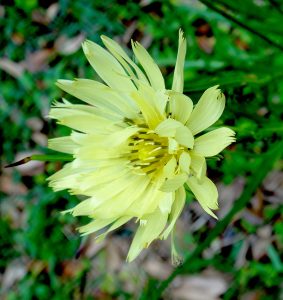
Dark stamens helps to identify this False Dandelion. Photo by Green Deane
A related foraging conumdrum is False Dandelions, in this case Pyrrhopappus carolinianus, but also common is Hypochaeris radicata. They can sometimes look close to the real thing. I saw a couple this past week around the state, one that leaned heavily towards Dandelion and one that leaned towards False. At a quick glance the False Dandelion usually has skinnier leaves, lighter yellow petals (rays) and have, when look from directly above, black specks which are missing on real dandelions. The end of the flower rays (petals) also appear more ragged.You can read about several species of False Dandelions in North America here.
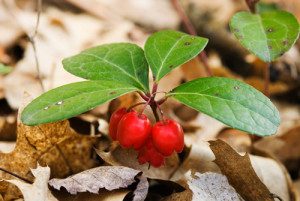
Wintergreen is also called Checkerberry.
Some winter plant facts: As the days grow shorter and the pre-dawn temperatures drops to around 25F trees begin to produce abscisic acid. It’s a stress hormone that travels through the sap activating some genes which in turn make cryoprotectant solutes in the cells: It’s plant antifreeze that’s good to about 40 degrees below zero. This is why trees explode when the mercury drops below -40. The anti-freeze no longer protects them and the sap turns to ice which expands and shatters the tree. The autumn dropping of leaves is more related to drought than cold temperatures. Winter is a dry spell. Trees lose 90% of their water through their leaves. Drop the leaves you save water. Just like some trees some plants stay evergreen in winter. Chickweed, a fleeting annual locally, actually germinates under the snow, non-native Japanese knotweed stays greens under the snow as does the native Wintergreen hence the name. It keeps its red berries all winter so they are easy to spot when the snow begins to melt… and the snow melts from the bottom up, not the top down. I can remember finding Wintergreen easily in Maine as a kid when the snow was melting. Their bright red and green made them very conspicuous. We called them Checkerberries and were a common site in hour horse pastures. You can read about Wintergreen here.

Green Deane Forum
Want to identify a plant? Perhaps you’re looking for a foraging reference? You might have a UFO, an Unidentified Flowering Object, you want identified. On the Green Deane Forum we — including Green Deane and others from around the world — chat about foraging all year. And it’s not just about warm-weather plants or just North American flora. Many nations share common weeds so there’s a lot to talk. There’s also more than weeds. The reference section has information for foraging around the world. There are also articles on food preservation, forgotten skills from making bows to fermenting food. Several hard-to-find books are there page for page. Recent posts this week include Nettle Spanakopita, Pawpaws Starting Early? What are those White Blossoms, Brazilian Pepper Revisited, COVID 19, Palmer Amaranth, In The Loop, Tomatoes: A Fruit First, a Vegetable Second, and Butterweed: Annual Warning. You can join the Forum by going to the upper right hand top of this page.
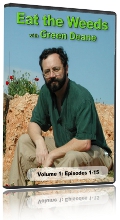
Foraging DVDs make a good gift to watch during the lifeless months of winter.
Though your foraging may drop off during the winter it’s a great time to study wild edibles with my nine DVD set. Each DVDs has 15 videos for 135 in all. They make a great gift. Order today. Some of these videos are of better quality than my free ones on the Internet. They are the same videos but many people like to have their own copy. I burn and compile the sets myself so if you have any issues I handle them personally. There are no middle foragers. And I’m working on adding a tenth DVD. To learn more about the DVDs or to order them click here.
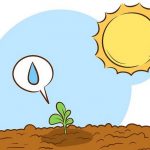 Donations to upgrade EatTheWeeds.com have gone well. Thank you to all who have contributed to either via the Go Fund Me link, the PayPal donation link or by writing to Green Deane POB 941793 Maitland FL, 32794. There are many needs left such as expanding the foraging teacher page and the page on monotypic edibles. There’s always something and such things get more complex and expensive every year.
Donations to upgrade EatTheWeeds.com have gone well. Thank you to all who have contributed to either via the Go Fund Me link, the PayPal donation link or by writing to Green Deane POB 941793 Maitland FL, 32794. There are many needs left such as expanding the foraging teacher page and the page on monotypic edibles. There’s always something and such things get more complex and expensive every year.
This is weekly newsletter 395, If you want to subscribe to this free newsletter you can find the sign-up form in the menu at the top of the page.
To donate to the Green Deane Newsletter click here.
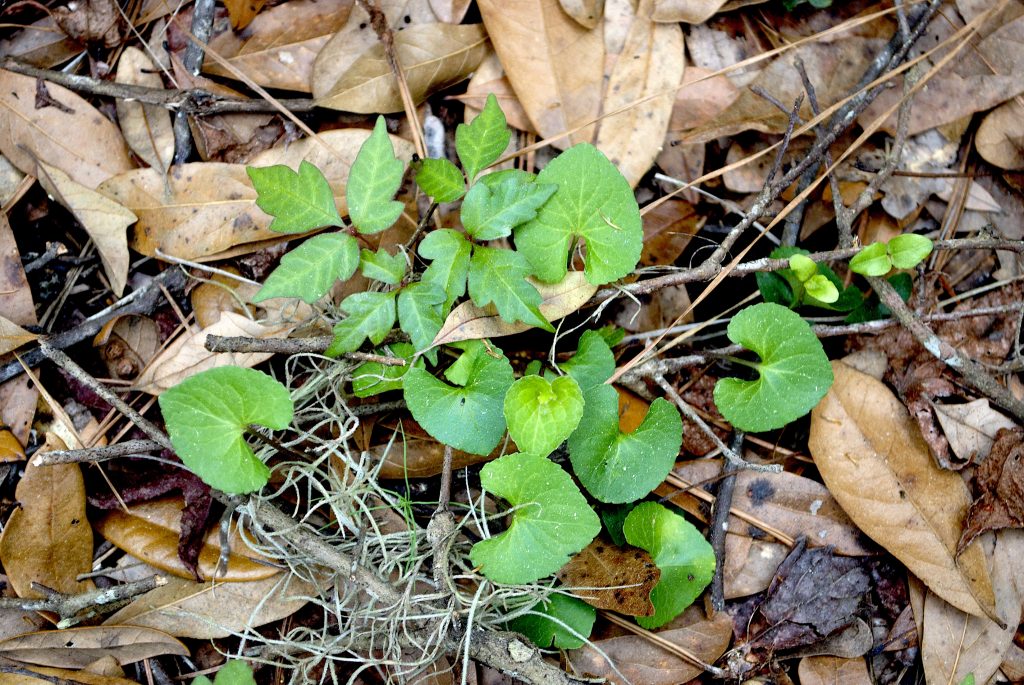
Be careful while foraging. Here are edible violets and poison ivy together. Photo by Green Deane


Right there with you! DST is just ridiculous! Just think of all the wasted hours attributed to this foolishness.